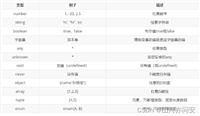背景
本系列主要目标初步完成一款智能音箱的基础功能,包括语音唤醒、语音识别(语音转文字)、处理用户请求(比如查天气等,主要通过rasa自己定义意图实现)、语音合成(文字转语音)功能。
语音识别、语音合成采用离线方式实现。
语音识别使用sherpa-onnx,可以实现离线中英文语音识别。
本文用到的一些安装包在snowboy那一篇的必要条件中已经完成了部分构建,在离线语音识别安装完成之后也会把相关代码写到snowboy项目中,语音唤醒之后调用语音识别翻译用户说话的内容。
语音唤醒文章地址:
snowboy 自定义唤醒词 实现语音唤醒【语音助手】_殷长庆的博客-csdn博客
参考文章
sherpa-onnx教程(强烈建议按官网的步骤安装):
installation — sherpa 1.3 documentation
sherpa-onnx的预编译模型
pre-trained models — sherpa 1.3 documentation
实践
下载安装sherpa-onnx
cd /home/test
git clone https://github.com/k2-fsa/sherpa-onnx
cd sherpa-onnx
mkdir build
cd build
cmake -dcmake_build_type=release ..
make -j6安装完成之后会在bin目录下发现sherpa-onnx的可执行文件
下载预编译模型
我选择的是offline-paraformer版本的模型,因为他同时支持中英文的离线识别,这个离线识别是基于wav视频文件的,正好满足要求。
参考官网地址:
paraformer models — sherpa 1.3 documentation
下面是操作步骤:
cd /home/test/sherpa-onnx
git_lfs_skip_smudge=1 git clone https://huggingface.co/csukuangfj/sherpa-onnx-paraformer-zh-2023-03-28
cd sherpa-onnx-paraformer-zh-2023-03-28
git lfs pull --include "*.onnx"检查是否下载成功,注意看模型文件的大小
sherpa-onnx-paraformer-zh-2023-03-28$ ls -lh *.onnx
-rw-r--r-- 1 kuangfangjun root 214m apr 1 07:28 model.int8.onnx
-rw-r--r-- 1 kuangfangjun root 824m apr 1 07:28 model.onnx可以看到两个模型文件,这俩模型本机测试感觉差距不是太大,我选择的是int8这个版本
测试语音识别
测试以下语音识别效果
cd /home/test/sherpa-onnx
./build/bin/sherpa-onnx-offline \
--tokens=./sherpa-onnx-paraformer-zh-2023-03-28/tokens.txt \
--paraformer=./sherpa-onnx-paraformer-zh-2023-03-28/model.int8.onnx \
./sherpa-onnx-paraformer-zh-2023-03-28/test_wavs/0.wav出现相应的正确打印就代表语音识别准备工作完成了
集成到snowboy
首先在sherpa-onnx目录的python-api-examples下有python的api,我们需要的是offline-decode-files.py这个文件,其中main()方法用来离线识别一个wav文件。
接下来我们对该文件进行一点点的修改,主要是把模型的默认参数配置好,然后识别完成之后返回识别内容
offlinedecode.py
把offline-decode-files.py文件更名为offlinedecode.py,或者是新建一个offlinedecode.py文件
touch offlinedecode.py
vim offlinedecode.py编辑文件的内容
#!/usr/bin/env python3
#
# copyright (c) 2023 by manyeyes
"""
this file demonstrates how to use sherpa-onnx python api to transcribe
file(s) with a non-streaming model.
please refer to
https://k2-fsa.github.io/sherpa/onnx/index.html
to install sherpa-onnx and to download the pre-trained models
used in this file.
"""
import time
import wave
from typing import list, tuple
import numpy as np
import sherpa_onnx
class constants:
encoder="" # or 如果用zipformer模型需要修改成zipformer的 encoder-epoch-12-avg-4.int8.onnx
decoder="" # or 如果用zipformer模型需要修改成zipformer的decoder-epoch-12-avg-4.int8.onnx
joiner="" # or 如果用zipformer模型需要修改成zipformer的joiner-epoch-12-avg-4.int8.onnx
tokens="/home/test/sherpa-onnx/sherpa-onnx-paraformer-zh-2023-03-28/tokens.txt" # 如果用zipformer模型需要修改成zipformer的tokens.txt
num_threads=1
sample_rate=16000
feature_dim=80
decoding_method="greedy_search" # or modified_ beam_ search, only used when the encoder is not empty
contexts="" # 关键词微调,只在modified_ beam_ search模式下有用
context_score=1.5
debug=false
modeling_unit="char"
paraformer="/home/test/sherpa-onnx/sherpa-onnx-paraformer-zh-2023-03-28/model.int8.onnx" # 实际上使用的是该模型
global args,contexts_list,recognizer
args = constants()
def encode_contexts(args, contexts: list[str]) -> list[list[int]]:
tokens = {}
with open(args.tokens, "r", encoding="utf-8") as f:
for line in f:
toks = line.strip().split()
tokens[toks[0]] = int(toks[1])
return sherpa_onnx.encode_contexts(
modeling_unit=args.modeling_unit, contexts=contexts, sp=none, tokens_table=tokens
)
def read_wave(wave_filename: str) -> tuple[np.ndarray, int]:
"""
args:
wave_filename:
path to a wave file. it should be single channel and each sample should
be 16-bit. its sample rate does not need to be 16khz.
returns:
return a tuple containing:
- a 1-d array of dtype np.float32 containing the samples, which are
normalized to the range [-1, 1].
- sample rate of the wave file
"""
with wave.open(wave_filename) as f:
assert f.getnchannels() == 1, f.getnchannels()
assert f.getsampwidth() == 2, f.getsampwidth() # it is in bytes
num_samples = f.getnframes()
samples = f.readframes(num_samples)
samples_int16 = np.frombuffer(samples, dtype=np.int16)
samples_float32 = samples_int16.astype(np.float32)
samples_float32 = samples_float32 / 32768
return samples_float32, f.getframerate()
# 初始化(因为用到的是paraformer,所以实际上初始化的是paraformer的识别)
def init():
global args
global recognizer
global contexts_list
contexts_list=[]
if args.encoder:
contexts = [x.strip().upper() for x in args.contexts.split("/") if x.strip()]
if contexts:
print(f"contexts list: {contexts}")
contexts_list = encode_contexts(args, contexts)
recognizer = sherpa_onnx.offlinerecognizer.from_transducer(
encoder=args.encoder,
decoder=args.decoder,
joiner=args.joiner,
tokens=args.tokens,
num_threads=args.num_threads,
sample_rate=args.sample_rate,
feature_dim=args.feature_dim,
decoding_method=args.decoding_method,
context_score=args.context_score,
debug=args.debug,
)
elif args.paraformer:
recognizer = sherpa_onnx.offlinerecognizer.from_paraformer(
paraformer=args.paraformer,
tokens=args.tokens,
num_threads=args.num_threads,
sample_rate=args.sample_rate,
feature_dim=args.feature_dim,
decoding_method=args.decoding_method,
debug=args.debug,
)
# 语音识别
# *sound_files 要识别的音频路径
# return 识别后的结果
def asr(*sound_files):
global args
global recognizer
global contexts_list
start_time = time.time()
streams = []
total_duration = 0
for wave_filename in sound_files:
samples, sample_rate = read_wave(wave_filename)
duration = len(samples) / sample_rate
total_duration += duration
if contexts_list:
s = recognizer.create_stream(contexts_list=contexts_list)
else:
s = recognizer.create_stream()
s.accept_waveform(sample_rate, samples)
streams.append(s)
recognizer.decode_streams(streams)
results = [s.result.text for s in streams]
end_time = time.time()
for wave_filename, result in zip(sound_files, results):
return f"{result}"编辑完成保存,把文件移动到snowboy的python3目录下
mv offlinedecode.py /home/test/snowboy/examples/python3/demo.py
修改snowboy的demo.py文件
cd /home/test/snowboy/examples/python3/
vim demo.py主要修改为snowboy唤醒设备之后,开始录音,当结束录音时调用sherpa-onnx识别语音内容,把demo.py修改为以下内容
import snowboydecoder
import signal
import os
import offlinedecode
interrupted = false
def signal_handler(signal, frame):
global interrupted
interrupted = true
def interrupt_callback():
global interrupted
return interrupted
# 初始化语音识别
offlinedecode.init()
# 唤醒词模型文件
model = '../../model/hotword.pmdl'
# capture sigint signal, e.g., ctrl+c
signal.signal(signal.sigint, signal_handler)
detector = snowboydecoder.hotworddetector(model, sensitivity=0.5)
print('listening... press ctrl+c to exit')
# 录音之后的回调
# fname 音频文件路径
def audio_recorder_callback(fname):
text = offlinedecode.asr(fname)
# 打印识别内容
print(text)
# 删除录音文件
if isinstance(fname, str) and os.path.exists(fname):
if os.path.isfile(fname):
os.remove(fname)
# main loop
detector.start(detected_callback=snowboydecoder.play_audio_file,
audio_recorder_callback=audio_recorder_callback,
interrupt_check=interrupt_callback,
sleep_time=0.03)
detector.terminate()编辑完成保存,然后测试是否有识别成功
测试集成效果
cd /home/test/snowboy/examples/python3/
python demo.py成功之后会打印识别内容,然后删除本地录音文件。






发表评论